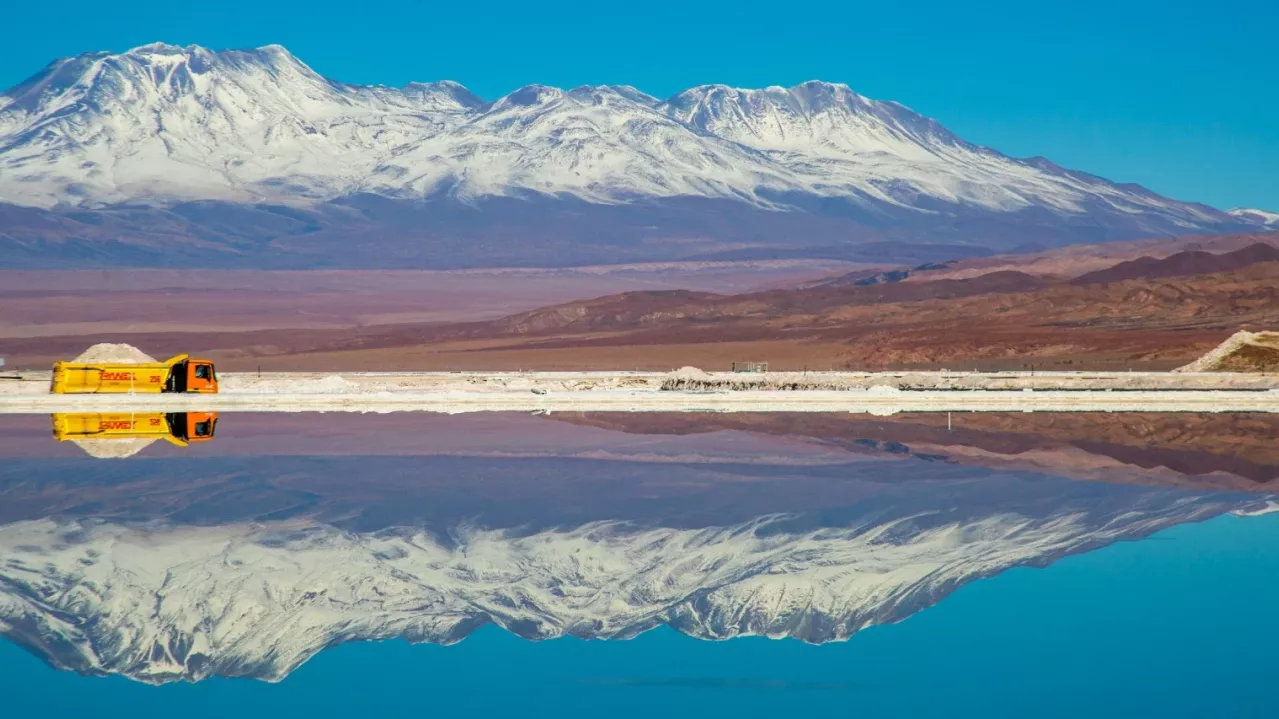Chile has 60 salt flats and saline lagoons, of which lithium is only extracted from the Salar de Atacama, whose production represents 30% of the world total. A network of protected salt flats will be created, but those that are exploited 'will be required to implement technologies that minimise the environmental impact in the recovery of lithium, such as, for example, direct extraction with brine reinjection'. This was announced by President Gabriel Boric at the presentation of the National Lithium Strategy.
There are several alternatives under the concept of direct extraction, which consists of extracting the brine from under the salt crust, extracting the lithium and returning the brine without the mineral to the salt basin, thus eliminating the current process of water evaporation.
Leopoldo Soto, a physicist at the Chilean Nuclear Energy Commission of the Ministry of Energy, explained that today this industry is not sustainable, since, by extracting the brine from the salt flat in pools where the water evaporates to obtain the mineral, 'it makes it unable to recirculate to the salt flat and there is no water balance, affecting the communities and the ecosystem around it'.
According to a study carried out in 2020 by the researcher, Ingrid Garcés, from the University of Antofagasta, 2 million liters of water evaporate from the pools to produce one ton of lithium, which is equivalent to 2 thousand tons of water that stop circulating.
The also academic of the Pontificia Universidad Católica de Chile, said that it is necessary to improve extraction methods to have a more efficient process 'without losing so much water and that it can be reintegrated into the salt flat' and added that the direct extraction system avoids extracting brine in pools where large amounts of water evaporate. But he warned that 'there is still a lot of progress to be made in research on this issue, there are very few who talk about it. The reason why few studies have been done is because it is cheap to evaporate water and, before, water scarcity was not a priority."
The U.S. company Albemarle, which has been operating in the country since the 1980s and whose contract with the State of Chile expires in 2043, is currently piloting direct extraction systems and studying the reinjection of brine into the salt flat, new systems 'that have not yet been implemented in the industry' and that are 'highly demanding in terms of energy and water and their sustainable use requires rigorous studies on the possibility of re-injecting the brine into the Salar', said Ignacio Mehech, VP External Affairs Latam and Country Manager Chile at Albemarle, in writing.
To move in this direction, last February they connected to the Central Electric System and signed a renewable energy contract with Engie for the plant in the Salar de Atacama; they are carrying out studies on the reinjection of brine into the salt flat, and they closed an agreement with the company Cramsa to have desalinated water from the sea, of up to 500 liters per second, starting in 2027. "The investment associated with desalinated water and reinjection studies exceeds US$ 5 million," said the executive.
Mehech pointed out that they are in the Research and Development (R+D) stage of direct extraction technologies and building a pilot center in Antofagasta, which would be ready in September, and although they have been carrying out tests at the plant since 2017, 'this project seeks to have larger facilities and better access to supplies and services with an investment of close to US$ 3 million in infrastructure alone'.
The executive said that Albemarle already extracts lithium in a sustainable way, because 'it practically does not use fresh water', but they are committed to growing with sustainability, which they hope to achieve with the incorporation of new technologies, which allow lithium to be selectively extracted from the brine of the core of the salt flat, to avoid the process - partial or total - of water evaporation.
Regarding the studies of brine reinjection into the salt flat, he said that it is 'essential to know the feasibility of adequate reinjection in the core', for which they are carrying out tests that consist of pumping a certain amount of brine and re-injecting it in four positions within the mining company's property, outside the protected area, and that will last a maximum of six months.
Check the full article from Diario Financiero here
